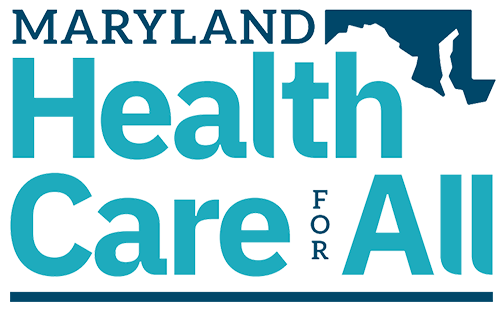Baltimore Sun
March 23, 2018
Erin Cox
Maryland’s Republican governor and Democratic legislature have forged a striking bipartisan proposal to accomplish what Washington has failed to do: stabilize Obamacare.
Given the stakes — 150,000 Marylanders potentially losing health insurance in an election year — lawmakers in the General Assembly worked quickly and quietly to try to avert the crisis by agreeing on a new $380 million tax to stabilize the individual insurance market.
And Republican Gov. Larry Hogan has promised to sign the measure, which has so far sailed through the Democratic-controlled legislature with no fanfare or public friction.
“We have people paying more for their health insurance than they’re paying for their mortgage for their house,” Hogan said in his first public comments about the reinsurance plan. “They’re making choices between buying groceries and having health insurance. It shouldn’t be that way.”
The plan, which still needs final approval in the Assembly, would impose a new, one-year state tax on insurance companies and uses that revenue to subsidize the most expensive health insurance claims from policies sold through the state’s health benefit exchange. By lowering the risk to insurers selling on the individual market, state leaders hope to lower premiums enough to make them affordable next year.
If lawmakers did nothing, they said, the individual market had the potential to collapse weeks before the Nov. 6 election, creating a crisis in which roughly 150,000 people who had purchased policies on the health insurance exchange created under the Affordable Care Act, or Obamacare, would no longer be able to get coverage.
“It could have been more catastrophic than that, as if that wasn’t bad enough,” Hogan said.
The one-year-fix is designed to help stave off premium increases that are projected to rise as much as 50 percent for the second year in a row. The $380 million raised by the tax could cut that increase in half, according to actuaries.
Republican and Democratic leaders say their plan to prevent the collapse of the individual market — and the ripple effects it would have throughout the state’s health care industry — was the most crucial and complex legislation of this four-year term. Similar versions of the plan have passed each chamber.
Hogan, Senate President Thomas V. Mike Miller and House Speaker Michael E. Busch said lawmakers must pass the fix because Congress did not enact a long-term federal reinsurance plan.
The three men, who often spar politically, said this was so important that they agreed to avoid public and partisan battles over how to do it.
“Everybody understands the severity of it,” said Busch, an Anne Arundel County Democrat. “As far as I’m concerned, it was the No. 1 priority of the General Assembly session. … Once people start dropping out [of the insurance market], there’s no chance of getting them back.”
All three blamed federal policymakers for not shoring up health care and for enacting policies that destabilized the market. “This is a crisis, and it’s not of our doing,” said Miller, a Calvert County Democrat.
Hogan designated a negotiating team to work with a group of Democratic leaders, who set up a panel of experts in 2017 to study options to keep Obamacare afloat. And Hogan promised not to publicly debate the issue in the news media, ensuring the quiet progress the measure has enjoyed.
“We said, ‘We’re not going to go have a press conference,’ ” Hogan recalled. “ ‘We’re not going to be talking about this in public. We want to meet the entire session, and if we do nothing else, we need to come up with a solution to this. And do you agree? Can we call a truce? Can we not play politics like Washington? We have a problem. Maryland can’t afford this. Our markets could collapse. Our last insurer could pull out of the state. And we’d have a disaster.’ And they all agreed.”
Annapolis insiders said the proposal was politically feasible only because the federal tax overhaul included a tax cut for health insurers.
Health insurance companies had been paying a 2.75 percent tax to the federal government, state analysts said, but will not have to pay it next year under tax cuts passed by Congress and signed by President Trump.
Maryland policymakers propose to have the companies pay that tax to the state instead.
The cost of group plans — those purchased through employers — have risen by no more than 3.3 percent a year in Maryland since 2014, according to the Maryland Health Benefit Exchange. Costs for insurance plans purchased on the individual market, however, have skyrocketed, increasing by 10 percent to 50 percent each year.
Without state intervention, health insurance premiums will rise by so much next year that only Maryland’s sickest people would bother buying insurance that expensive, said Insurance Commissioner Al Redmer.
That could possibly prompt the lone insurance company selling statewide policies on the exchange — CareFirst BlueCross BlueShield — to drop out of the market entirely, Redmer said.
“In my opinion, that would have been the impetus for the Affordable Care Act in Maryland to implode,” Redmer said. “There would have been a significant domino effect in the state that would hurt thousands and thousands and thousands of consumers.”
Several other states have also moved to create their own reinsurance programs to try to drive down insurance costs, including Alaska, Minnesota, Oregon, Oklahoma and Wisconsin.
State leaders hope that the new $380 million fund will help them apply for a federal waiver that could lead to a large federal grant to help drive down premiums even further in the future.
A commission established by the General Assembly last year to examine how federal decisions affected Obamacare in Maryland started working in 2017 on potential solutions to shore up the market. This year, the commission hired an actuarial firm, Wakely Consulting Group, to provide data about what the state had to do to protect the market and how much it would cost.
Michele Eberle, executive director of the Maryland Health Benefit Exchange on which individual insurance plans are sold, acknowledged that more work will be needed to control insurance rate increases in the future.
“This is putting a tourniquet on the bleeding,” Eberle said. “It’s not going to fix it entirely.”
Last summer, the two insurers that offered coverage on the exchange told state regulators they had lost a combined $447 million since policies began selling under the Affordable Care Act in 2014.
Health insurance companies have blamed rising premiums on the uncertainty in Washington, Congress’ decision to eliminate enforcement of the individual mandate and President Donald Trump’s decision to forgo subsidies to insurance companies that had been a tenet of Obamacare.
Political analysts say rising health care costs are a politically potent issue in the 2018 election, particularly for Democrats.
“It’d be hard to overstate the level of emotion and anxiety that voters have,” said Steve Raabe, president of Annapolis-based OpinionWorks polling. “Officials must be feeling that from their constituents.”
Raabe said his firm anticipated it would take six minutes per person to conduct a recent survey about health insurance policies. Instead, respondents were so fired up about the issue that the conversations averaged 12 minutes apiece.
“Democrats were so upset and so animated, our interviewers couldn’t control the interview,” Raabe said.
“If you combine the anxiety about the health care issue with the dissatisfaction about the federal tax giveaway, it creates a perfect storm. … I think people saw an opportunity to address them both,” Raabe said.
House Minority leader Nic Kipke, an Anne Arundel County Republican, said health care was the No. 1 issue of constituents who call his caucus members.
“Never in my life in public office have people been coming into my office every day and saying, ‘You need to help me with my rising insurance costs. I just can’t do this,’ ” Kipke said. “They’re begging for help.”
Yet Kipke was among the 47 House Republicans to vote against the plan. He said many in his 50-member caucus could not sign on to a new tax and preferred a proposal to fund the program another way.
“The bottom line is we need a lot of money to really bring down rates,” he said.
Del. Joseline A. Pena-Melnyk, a Prince George’s County Democrat who helped negotiate the deal and is sponsoring the legislation, said the market must be stabilized or else it could risk the state’s entire health care system. Lawmakers had considered at least two other ways to pay for a reinsurance program or otherwise reduce the cost of premiums. But the only idea that had agreement was to tax health insurance companies.
Proposals to create a state-level insurance mandate that could help buy health care policies for the uninsured were removed from the plan to make it more politically palatable.
“We decided to strip it and just leave what we could build consensus around,” Pena-Melnyk said. “Sometimes you have to do that to get a bill through, and this is an emergency.
“The fact is, we cannot afford to do nothing,” she added. Leaving “people in that individual market without insurance will affect all the hospitals.”
Barbara Gruber, a Mount Washington resident and adjunct art teacher who just turned 60, said Obamacare provided her with the first steady and affordable insurance of her adult life. Her medical history includes two heart stents and double-bypass surgery, so without the federal reforms, she stayed up at night worrying about what care wouldn’t be covered and what she would have to pay.
But since the recent upheaval to Obamacare under Republicans in Congress and the Trump White House, insurer CareFirst BlueCross BlueShield has discontinued a plan she liked, shifting her to one that covers less and costs 50 percent more. She fears what could happen if the insurance market gets more unstable, or collapses.
“It would be a choice for me between breathing and buying groceries or paying taxes,” Gruber said.



